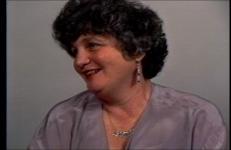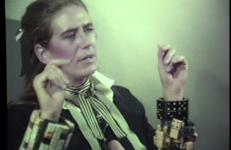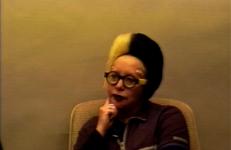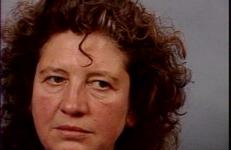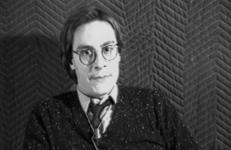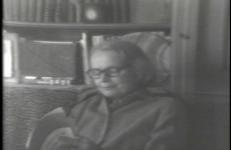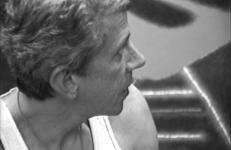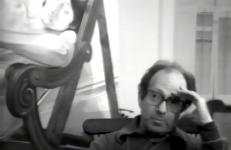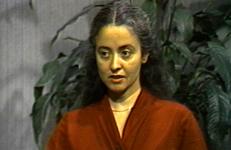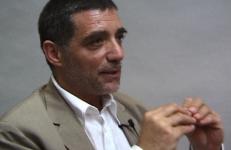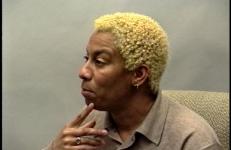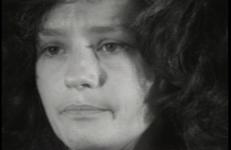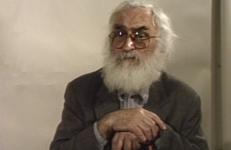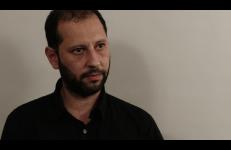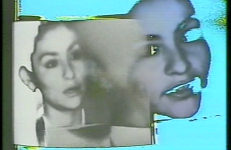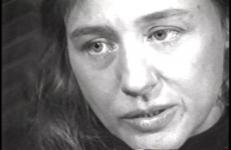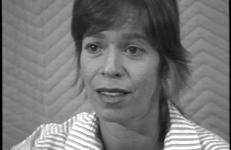In 1973 Joan Nestle co-founded the Lesbian Herstory Archives, an essential collection of documents, writings, and artifacts of lesbian cultural history. In 1979 she began writing erotic stories and has published two collections of writings: A Restricted Country (1987) and A Fragile Union (1998). She took a controversial stance in opposition to the 1980s feminist anti-pornography movement, thus becoming a fervent pro-sex activist in the “Sex Wars.” Interview by Nina Levitt.
Interview
A historical interview originally recorded in 1983.
Interview by Joan Livingstone.
Growing up in the early computer age, around machines like the Commodore 64, had a formative effect on Marisa Olson and her subsequent artistic career. Now operating across a diverse spectrum of media including video, performance, and even the internet itself, she creates work that simultaneously comments upon and instrumentalizes the potential of digital machines as well as the global networks they’re linked to. However, her work is not circumscribed within the boundaries of these systems’ technical specificity.
Dennis Oppenheim was a prominent figure in various art developments throughout the ’70s. Oppenheim moved through body/performance art and related video work to earthworks to his current large-scale “factories.” In all of his work, the transference of energy is an underlying concern.
French performance artist Orlan uses her own body as a sculptural medium. Since 1990, she has worked on La Reincarnation de Sainte-Orlan, a process of plastic surgeries that she “performs,” making elaborate spectacles with surgeons dressed in sci-fi costumes and broadcasting the operations live via satellite to galleries worldwide. By exploring a total transformation of self, Orlan delves into issues of identity and the malleability of the flesh. She lives and works in Paris, exhibiting and performing internationally.
Interview by Shay Degrandis, via translator.
Born and raised in Japan and a resident of New York since 1976, Eiko Otake is a movement-based, interdisciplinary artist. She worked for more than 40 years as Eiko & Koma, but since 2014 has been working on her own projects. Her works often investigate themes of death and dying, history, and the persistence of collective memory. Eiko has also broadened her collaborative practice to create interdisciplinary work with artists from different backgrounds and disciplines, both alive and deceased.
Ulrike Ottinger is a prolific German filmmaker whose work includes Madame X (1977), Ticket of No Return (1979), Freak Orlando (1981), Johanna D'Arc of Mongolia (1989), Countdown (1989), and Exile Shanghai (1997). Starting her visual arts career in Munich and Paris in painting, photography, and performance, Ottinger’s commitment to film took off with her move to Berlin.
Craig Owens (1950-1990) was a critic who wrote and lectured extensively on contemporary art. He showed particular interest in the issues of photography, postmodernism, feminism, and Marxist thought. A former associate editor for October and senior editor for Art in America, as well as professor of art history at Yale University and Barnard College, his writings were collected in Beyond Recognition: Representation, Power, and Culture (1994). Owens died of an AIDS-related illness in 1990.
Betty Parsons (1900-1982) was an influential art dealer in mid to late 20th century New York. She used her gallery as an influential advocate for the abstract avant-garde, and was renowned for championing new styles and new artists well before they received wider recognition or commercial success. Notable examples of Parson's circle include abstract expressionist giants Barnett Newman, Jackson Pollock, Mark Rothko and Clyfford Still.
Polish-American arist Ed Paschke (1939-2004) received his BFA from the School of the Art Institute of Chicago in 1961 and his MFA in 1970. Paschke was known as a member of the late-1960s Chicago Imagist movement, a group of artists who called themselves The Hairy Who, whose expressive style of figurative painting was rooted in outsider art, popular culture, and Surrealism. Paschke's fascination with the print media of popular culture led to a portrait-based art of cultural icons. Paschke used the celebrity figure, real or imagined, as a vehicle for explorations of personal and public identity with social and political implications.
Philip Pearlstein (b.1924) began painting figures in the 1960s and is known as a leading figure in American Realism. Throughout his career, Pearlstein's paintings evolved from an expressionistic style to a meticulously analytical vision. His work attempts to present the model as a documentation of the painting session, and his paintings are closely rendered under the existing studio lighting. Attuned to art history, Pearlstein is as interested in pattern and composition as he is in the body itself.
In this episode of The Live! Show, hosted by Jaime Davidovich, Eric Bogosian brings seven characters to life in seven minutes, Michael Smith plays the best driver in the world, Mitchell Kriegman offers a helping hand during the show’s popular call-in segment, and Louis Grenier demonstrates the organic face lift viewers can do at home.
Media artist Cyrille Phipps has been involved with numerous alternative media and lesbian activist projects, including Dyke TV and the Gay and Lesbian Emergency Media Campaign. Her video projects include Respect Is Due (1991), Black Women, Sexual Politics and the Revolution (with Not Channel Zero, 1992), Our House: Gays and Lesbians in the Hood (with Not Channel Zero, 1992), Sacred Lives, Civil Truths (with Catherine Saalfield, 1993), Dreaming Ourselves...
A philosopher and intermedia artist, Adrian Piper focuses on xenophobia, racism, and racial stereotyping
“As a black woman who can 'pass' and a Professor of Philosophy who leads a double life as an avant-garde artist, Piper has understandably focused on self-analysis and social boundaries. Over the years her work in performance, texts, newspaper, unannounced street events, videos, and photographs has developed an increasingly politicized and universalized image of what the self can mean.”
Spanish artist Jaume Plensa (b. 1955) creates sculptures and installations that intend to unify individuals through their relationship to memory, the body, and spirituality. Often referencing literature, psychology, biology, and history, his practice speaks of a shared humanity despite the world’s complexity. In this way, language acts as a metaphor, and the human figure a universal symbol. Plensa is perhaps best known for works that engage groups of people in public spaces.
Ingrid Pollard is a photographer living in London. Her photographic works, generally of people and landscape, serve to provide a human context for issues of transmigration and “fleeting” identity. Combining personal photographs with traditional views of the English countryside, Pollard questions as well as reconstructs the concept of “Britishness.” In doing so, Pollard also scrutinizes the location of the “other,” and contrasts actual physical similarity or material likeness of people and places with perceived or socially constructed difference.
Tom Poole is an organizer of many things. Counting arts administrator, media facilitator, and activist among the many titles he has held over the years, Poole currently brings all these capacities to bear as the executive director of the Pittsburgh Community Television (PCTV) station. In his contribution to the On Art and Artists series, Poole discusses his early foray into media activism as a member of the video art collective Black Planet Productions.
In this experimental interview with Jill Ker Conway, Freed outlines a portrait in chalk on a black surface as the soundtrack conveys Conway describing her fascination with the way ones visual self appears on camera and the way an artist perceives their subject. When the sketch is complete, Freed begins to apply paint, revealing Conway’s actual photograph beneath the chalk outline through a chroma-keying technique.
Richard Prince appropriates images from commercial advertising and travelogues for his photographs. Choosing these images for their melodramatic, super-real power, he then isolates their stylistic realism to accentuate its rhetoric. In this portrait/performance, Prince narrates experiences that demonstrate his extreme sensitivity to appearances and context. He relates the event of buying his first car as the imprinting of a certain aesthetic impression.
This title is also available on Crossover Series.
Arlene Raven (1944-2006) was a feminist historian, theoretician, poet, and art historian who has published numerous books on contemporary art and written criticism for The Village Voice and a variety of other newspapers, art magazines, exhibition catalogues, and scholarly journals since 1969. She is a pioneer in progressive education and was an architect of the educational programs of the Feminist Studio Workshop, an independent school. She is also the founder of the Women’s Caucus for Art, the Los Angeles Woman’s Building, and Chrysalis magazine.
Milton Resnick was born in Bratslav, Russia in 1917, and immigrated to the United States in 1922. Resnick was one of the few survivors of the second generation Abstract Expressionists, and is known for his large, thickly painted abstract canvases. Like other painters of the time, Resnick was striving for an overall quality to his paintings, a way to unite the foreground and background. While others moved toward throwing or dragging quantities of paint across the face of the canvas, Resnick retained a particularly personal and impassioned relation to brush painting.
In this interview with Melika Bass, a Chicago-based filmmaker and installation artist, Camilo Restrepo discusses how he became a filmmaker and how he chooses to document his native home of Colombia. After pursuing a degree in painting, Restrepo got a “regular job” but found himself pulled back towards creative pursuits. Equipped with a Super 8 camera, he set out to document his home honestly, and without an excess of materials.
This interview with a Mexican squatter in Oaxaca, Mexico is an example of the genre that Breder conceptualized as “aesthetic ethnography.” This term refers to processes and form which attempt to illuminate people and cultures in specific historical moments and places through an aesthetic rather than a scientific methodology.
Martha Rosler (b.1943) received her BA from Brooklyn College in 1965 and her MFA from the University of California, San Diego in 1974. Rosler has produced seminal works in the fields of photography, performance, video, installation, criticism, and theory. Committed to an art that engages a public beyond the confines of the art world, Rosler investigates how socioeconomic realities and political ideologies dominate everyday life. Rosler's work has entered the canon of contemporary art through a process of steady, stealthy infiltration. Lacking commercial gallery representation until 1993, her endeavors as a prolific essayist, lecturer, and political agitator enabled her agenda to trickle down through critical channels.
Painter, Susan Rothenberg (b.1945) is known for her poetic, atmospheric images. From her early horse paintings to her paintings of athletes and dancers, Rothenberg's works have always been subservient to the flatness and objectivity of her gesturally dense surfaces. In her paintings, image and surface combine in a private symbolism and restrained drama that is physically and emotionally intrusive. Rothenberg currently lives and works in New Mexico.




